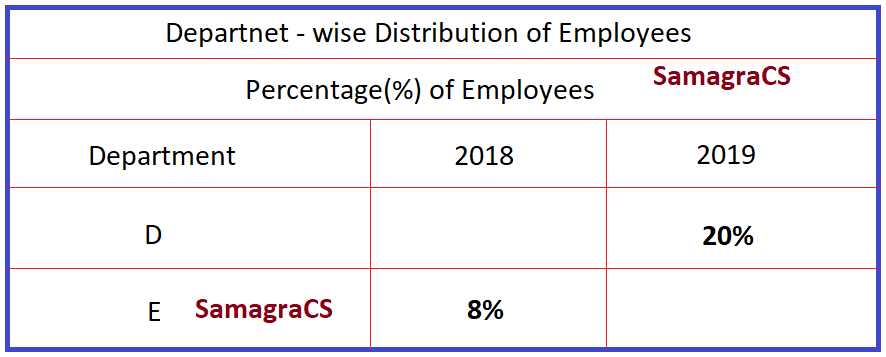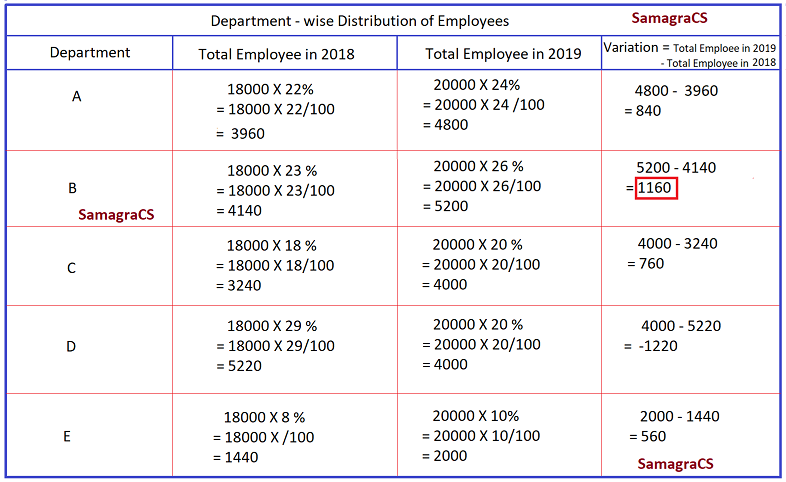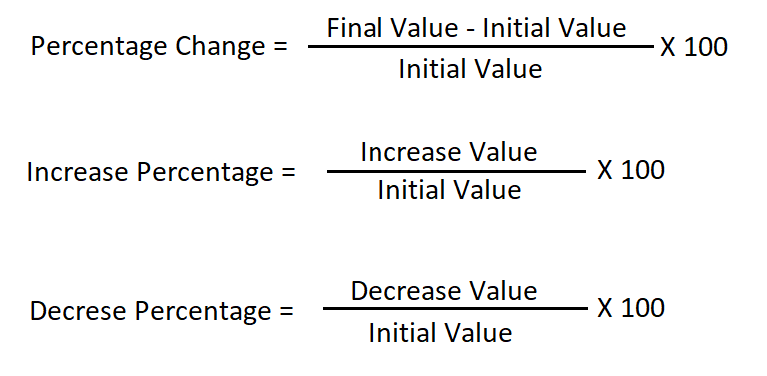UGC NET Paper-1 30-September-2020 Shift – Morning Question With Solution
| Q1➡ | Comprehension: Study the data in the table and answer the questions that follow Consider the following table that shows the percentage (%) distribution of employees in five different departments A-E in a company during the years 2018 and 2019. There is a total number of 18000 and 20000 employee՚s in the company during the years 2018 and 2019 respectively. 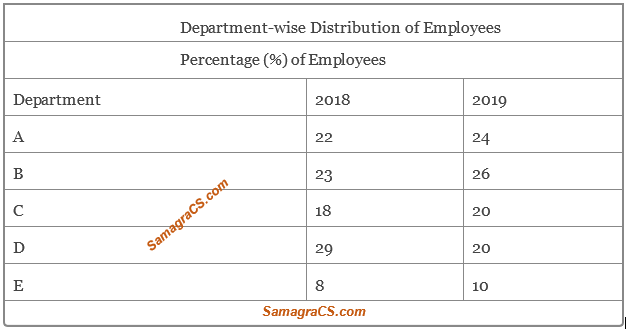 Ques-1 What is the ratio of the number of employees in the department – E in 2018 compared to those in the department – D in 2019? |
| i ➥ 9: 25 |
| ii ➥ 9: 15 |
| iii ➥ 8: 15 |
| iv ➥ 8: 25 |
Show Answer With Best Explanation
| More Discussion | Explanation On YouTube | Learn Topic Wise | Help-Line |
| Q2➡ | Comprehension: Study the data in the table and answer the questions that follow Consider the following table that shows the percentage (%) distribution of employees in five different departments A-E in a company during the years 2018 and 2019. There is a total number of 18000 and 20000 employee՚s in the company during the years 2018 and 2019 respectively.  Ques-2 If the average monthly salary of employees in the Department – A was 24000 in 2018, then what was the approximate total salary expenses of the department – A in 2018? |
| i ➥ ₹ 1.2 crores |
| ii ➥ ₹ 4.7 crores |
| iii ➥ ₹ 1.4 crores |
| iv ➥ ₹ 9.5 crores |
Show Answer With Best Explanation
| More Discussion | Explanation On YouTube | Learn Topic Wise | Help-Line |
| Q3➡ | Comprehension: Study the data in the table and answer the questions that follow Consider the following table that shows the percentage (%) distribution of employees in five different departments A-E in a company during the years 2018 and 2019. There is a total number of 18000 and 20000 employee՚s in the company during the years 2018 and 2019 respectively.  Ques-3 In which department the variation (represented by absolute numbers) in employee strength is maximum in 2019 with reference to 2018? |
| i ➥ Department – A |
| ii ➥ Department – B |
| iii ➥ Department – D |
| iv ➥ Department – E |
Show Answer With Best Explanation
| More Discussion | Explanation On YouTube | Learn Topic Wise | Help-Line |
| Q4➡ | Comprehension: Study the data in the table and answer the questions that follow Consider the following table that shows the percentage (%) distribution of employees in five different departments A-E in a company during the years 2018 and 2019. There is a total number of 18000 and 20000 employee՚s in the company during the years 2018 and 2019 respectively.  Ques-4 If 300 employees had left the department – B at the end of 2018, then how many new employees joined in 2019 in the department – B? |
| i ➥ 480 |
| ii ➥ 960 |
| iii ➥ 1360 |
| iv ➥ 1140 |
Show Answer With Best Explanation
| More Discussion | Explanation On YouTube | Learn Topic Wise | Help-Line |
| Q5➡ | Comprehension: Study the data in the table and answer the questions that follow Consider the following table that shows the percentage (%) distribution of employees in five different departments A-E in a company during the years 2018 and 2019. There is a total number of 18000 and 20000 employee՚s in the company during the years 2018 and 2019 respectively.  Ques-5 What is the approximate percentage increase in the number of employees in the Department – C in the year 2019 with reference to the year 2018? |
| i ➥ 2 % |
| ii ➥ 2. 34 % |
| iii ➥ 23. 45% |
| iv ➥ 8. 34 % |
Show Answer With Best Explanation
| More Discussion | Explanation On YouTube | Learn Topic Wise | Help-Line |
| Q6➡ | The scope for violating research ethics is considered to be relevant in respect of which of the following stages in a research study? A. Formulating research hypothesis and setting up a Null hypothesis for testing it B. Defining and delimiting the scope of the research study C. Analyzing and interpreting research data D. In defining a research population and method of sampling E. Reporting the research findings and using the same as a basis for policy formulation Choose the correct answer from the options given below: |
| i ➥ C and E only |
| ii ➥ A and B only |
| iii ➥ B and C only |
| iv ➥ D and E only |
Show Answer With Best Explanation
| More Discussion | Explanation On YouTube | Learn Topic Wise | Help-Line |
| Q7➡ | Given below are two statements Statement I: Example of primary memory is RAM Statement II: Example of secondary memory is Pen drive In light of the above statements, choose the correct answer from the options given below |
| i ➥ Both Statement I and Statement II are true |
| ii ➥ Both Statement I and Statement II are false |
| iii ➥ Statement I is correct but Statement II is false |
| iv ➥ Statement I is incorrect but Statement II is true |
Show Answer With Best Explanation
| More Discussion | Explanation On YouTube | Learn Topic Wise | Help-Line |
| Q8➡ | Given below are two statements Statement I: Programmed Instructional material uses active responding and immediate feedback as important principles for learning Statement II: Skinner’s reinforcement principle is the basis for the preparation of linear types of programmed instructional material In light of the above statements, choose the correct answer from the options given below |
| i ➥ Both Statement I and Statement II are true |
| ii ➥ Both Statement I and Statement II are false |
| iii ➥ Statement I is true but Statement II is false |
| iv ➥ Statement I is false but Statement II is true |
Show Answer With Best Explanation
| More Discussion | Explanation On YouTube | Learn Topic Wise | Help-Line |
| Q9➡ | In the university education system as prevalent now, which of the following bodies/committees looks after formal approval of curriculum and courses of study? |
| i ➥ University Executive Council/Board of Management |
| ii ➥ Academic council of the concerned university |
| iii ➥ Board of studies |
| iv ➥ University Court |
Show Answer With Best Explanation
| More Discussion | Explanation On YouTube | Learn Topic Wise | Help-Line |
| Q10➡ | Given below are two statements Statement I: A percentile divides the distribution into 100 equal parts Statement II: Range is the distribution between zero and highest value In light of the above statements, choose the most appropriate answer from the options given below |
| i ➥ Both Statement I and Statement II are true |
| ii ➥ Both Statement I and Statement II are false |
| iii ➥ Statement I is correct but Statement II is false |
| iv ➥ Statement I is incorrect but Statement II is true |
Show Answer With Best Explanation
| More Discussion | Explanation On YouTube | Learn Topic Wise | Help-Line |
| Q11➡ | Match List I with List II 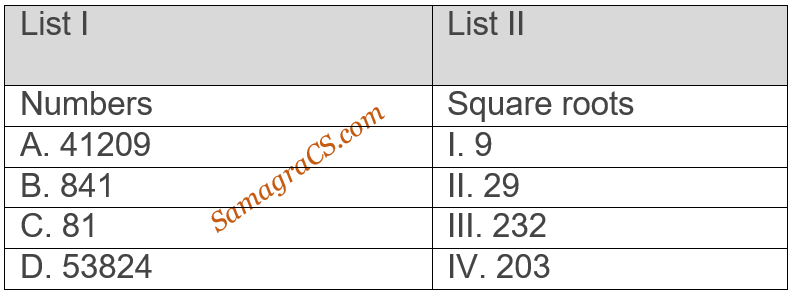 Choose the correct answer from the options given below: |
| i ➥ A – IV, B-III, C- I, D-II |
| ii ➥ A-II, B-IV, C-I, D-III |
| iii ➥ A-II, B-III, C-I, D-IV |
| iv ➥ A-IV, B-II, C-I, D-III |
Show Answer With Best Explanation
| More Discussion | Explanation On YouTube | Learn Topic Wise | Help-Line |
| Q12➡ | Given below are two statements Statement I: Compound interest involves the reinvestment of the earned interest, which in future years also earns interest Statement II: Simple interest is the amount earned or paid on a sum of compound interest and principal amount In light of the above statements, choose the most appropriate answer from the options given below |
| i ➥ Both Statement I and Statement II are true |
| ii ➥ Both Statement I and Statement II are false |
| iii ➥ Statement I is correct but Statement II is false |
| iv ➥ Statement I is incorrect but Statement II is true |
Show Answer With Best Explanation
| More Discussion | Explanation On YouTube | Learn Topic Wise | Help-Line |
| Q13➡ | Which one of the following ancient universities provided for the teaching of a special subject ‘Vajarayana Buddhism’ along with other subjects? |
| i ➥ Mithila University |
| ii ➥ Jagaddala University |
| iii ➥ Nalanda University |
| iv ➥ Odantapuri University |
Show Answer With Best Explanation
| More Discussion | Explanation On YouTube | Learn Topic Wise | Help-Line |
| Q14➡ | Given below are two statements Statement I: Volatile Organic Chemicals (VOCs) are contaminants more commonly found in groundwater than in surface water Statement II: VOCs are one of the criterion parameters to determine drinking water quality In light of the above statements, choose the correct answer from the options given below. |
| i ➥ Both Statement I and Statement II are true |
| ii ➥ Both Statement I and Statement II are false |
| iii ➥ Statement I is correct but Statement II is false |
| iv ➥ Statement I is incorrect but Statement II is true |
Show Answer With Best Explanation
| More Discussion | Explanation On YouTube | Learn Topic Wise | Help-Line |
| Q15➡ | While reporting the result of assessment a college teacher makes use of percentile ranks in place of scores obtained by his/her students. What kind of evaluation will it be called? |
| i ➥ Criterion-referenced |
| ii ➥ Norm-referenced |
| iii ➥ Formative |
| iv ➥ Summative |
| More Discussion | Explanation On YouTube | Learn Topic Wise | Help-Line |
| Q16➡ | Which learning theory provides support for active participation of learner in the learning process in an interactional setting with intrinsic motivation as the basis ? |
| i ➥ S-R Theory of Watson |
| ii ➥ Reinforcement Theory of skinner |
| iii ➥ Constructivist Theory of Vygotsy |
| iv ➥ Insight Theory of Kohler |
| More Discussion | Explanation On YouTube | Learn Topic Wise | Help-Line |
| Q17➡ | What type of fallacy is implied in the following “Fire is cold, because it is a substance” |
| i ➥ Badhita |
| ii ➥ Virudha |
| iii ➥ Asadharna |
| iv ➥ Anupsarhhan |
| More Discussion | Explanation On YouTube | Learn Topic Wise | Help-Line |
| Q18➡ | The chronological sequence of institutions of educational communication is A. AIR B. CEC C. UGC – Countrywide classroom D. Gyan Vani Choose the correct answer from the options given below. |
| i ➥ A, C, B, D |
| ii ➥ A, B, C, D |
| iii ➥ B, C, A, D |
| iv ➥ D, A, B, C |
| More Discussion | Explanation On YouTube | Learn Topic Wise | Help-Line |
| Q19➡ | In a family of four A, B, C and D; D is taller than B, C is shortest of all and A is taller than only one person, then A. Number of persons taller than A is the number of persons shorter than B B. D is tallest C. A is shortest D. No one is shorter than C E. Only one person is shorter than B Choose the correct answer from the options given below: |
| i ➥ A, B and E only |
| ii ➥ A, B and D only |
| iii ➥ B and C only |
| iv ➥ A and D only |
| More Discussion | Explanation On YouTube | Learn Topic Wise | Help-Line |
| Q20➡ | Find the odd pair/group A. 66 – 70 B. 30 – 48 C. 80 – 98 D. 40 – 58 E. 72 – 90 Choose the correct answer from the options given below: |
| i ➥ A only |
| ii ➥ C and E only |
| iii ➥ B and D only |
| iv ➥ E only |
| More Discussion | Explanation On YouTube | Learn Topic Wise | Help-Line |
| Q21➡ | In Which learning theory provides support for active participation of learner in the learning process in an interactional setting with intrinsic motivation as the basis? |
| i ➥ S-R Theory of Watson |
| ii ➥ Reinforcement Theory of Skinner |
| iii ➥ Constructive Theory of Vygotsy |
| iv ➥ Insight Theory of Kohler |
| More Discussion | Explanation On YouTube | Learn Topic Wise | Help-Line |
| Q22➡ | Under which of the following objectives of Millenium Development Goals, the progress in the world as a whole has been least satisfactory? |
| i ➥ Halting by 2015 and beginning to reverse the spread of HIV/AIDS |
| ii ➥ Eliminating gender disparity in primary and secondary education by 2015 |
| iii ➥ Reducing the proportion of population below national poverty line by 2015 |
| iv ➥ Reducing by half proportion of people who suffer from hunger by 2015 |
| More Discussion | Explanation On YouTube | Learn Topic Wise | Help-Line |
| Q23➡ | Find the odd one out among the following |
| i ➥ DfGj |
| ii ➥ HkLo |
| iii ➥ MoPs |
| iv ➥ TvWz |
| More Discussion | Explanation On YouTube | Learn Topic Wise | Help-Line |
| Q24➡ | Match List I with List II 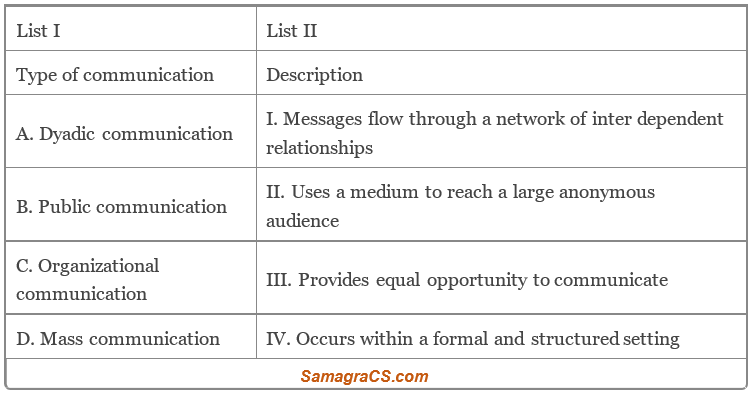 Choose the correct answer from the options given below: |
| i ➥ A-II, B-III, C-IV, D-I |
| ii ➥ A-III, B-IV, C-l, D-II |
| iii ➥ A-IV, B-I, C-II, D-III |
| iv ➥ A-I, B-II, C-III, D-IV |
Show Answer With Best Explanation
| More Discussion | Explanation On YouTube | Learn Topic Wise | Help-Line |
| Q25➡ | Which of the following is related to National Super Computing Mission of Government of India? |
| i ➥ Param 8000 |
| ii ➥ Param 10000 |
| iii ➥ Param Dhavak |
| iv ➥ Param Shivay |
| More Discussion | Explanation On YouTube | Learn Topic Wise | Help-Line |
| Q26➡ | Which of the following is NOT one of the Missions under National Action Plan on climate change? |
| i ➥ National Water Mission |
| ii ➥ National Mission on Energy Efficiency Improvement |
| iii ➥ Green India Mission |
| iv ➥ National Mission on Solid Waste Management |
| More Discussion | Explanation On YouTube | Learn Topic Wise | Help-Line |
| Q27➡ | For the introduction of the concept of Total Quality Management (TQM) in universities, which of the following will be considered helpful? A. Systems thinking B. Participatory management C. Rigorous admission procedures D. SWOC (Strength, Weakness, Opportunity and Challenge analysis) E. Introduction of skill-development programmes Choose the correct answer from the options given below: |
| i ➥ A, B and D only |
| ii ➥ A, B and C only |
| iii ➥ B, C and D only |
| iv ➥ C, D and E only |
| More Discussion | Explanation On YouTube | Learn Topic Wise | Help-Line |
| Q28➡ | Given below are two statements Statement I: Qualitative research is an umbrella term to refer to various research strategies that share certain characteristics Statement II: The research-data collected in qualitative research has been termed soft i.e.. , rich in description of people, places and conversation etc. In light of the above statements, choose the correct answer from the options given below |
| i ➥ Both Statement I and Statement II are true |
| ii ➥ Both Statement I and Statement II are false |
| iii ➥ Statement I is correct but Statement II is false |
| iv ➥ Statement I is incorrect but Statement II is true |
| More Discussion | Explanation On YouTube | Learn Topic Wise | Help-Line |
| Q29➡ | According to Noise Pollution (Regulation and Control) Rules, 2000, the night time Noise standard prescribed for Educational Institutions is |
| i ➥ 55 dB (A) |
| ii ➥ 50 dB (A) |
| iii ➥ 45 dB (A) |
| iv ➥ 40 dB (A) |
| More Discussion | Explanation On YouTube | Learn Topic Wise | Help-Line |
| Q30➡ | Match List I with List II 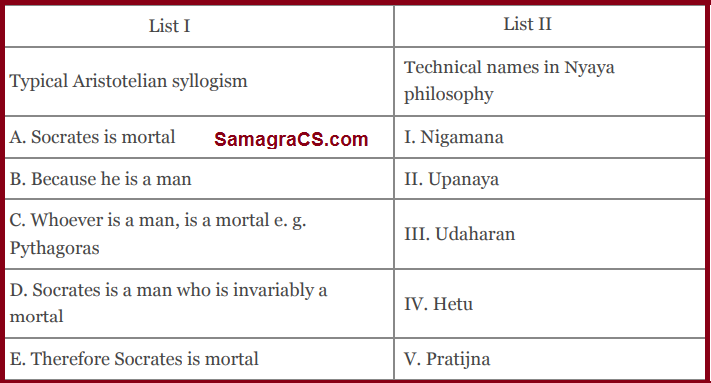 Choose the correct answer from the options given below: |
| i ➥ A-V, B-IV, C-III, D-II, E-I |
| ii ➥ A-I, B-II, C-III, D-IV, E-V |
| iii ➥ A-III, B-l, C-II, D-V, E-IV |
| iv ➥ A-II, B-III, C-l, D-IV, E-V |
| More Discussion | Explanation On YouTube | Learn Topic Wise | Help-Line |
| Q31➡ | In which one of the sampling methods, units comprising its constituents are groups taken intact rather than individually? |
| i ➥ Cluster sampling method |
| ii ➥ Simple random sampling method |
| iii ➥ Systematic sampling method |
| iv ➥ Dimensional sampling method |
| More Discussion | Explanation On YouTube | Learn Topic Wise | Help-Line |
| Q32➡ | Given below are two statements Statement I: A research hypothesis is a tentative statement postulating a relationship between factual and conceptual elements of the variables Statement II: A researcher sets up a “Null hypothesis” so that the deduced consequences of a research hypothesis may be directly tested In light of the above statements, choose the correct answer from the options given below. |
| i ➥ Both Statement I and Statement II are true |
| ii ➥ Both Statement I and Statement II are false |
| iii ➥ Statement I is correct but Statement II is false |
| iv ➥ Statement I is incorrect but Statement II is true |
| More Discussion | Explanation On YouTube | Learn Topic Wise | Help-Line |
| Q33➡ | Which of the following describe understanding level teaching? A. Systematic, step by step presentation to promote retention of facts presented B. Giving a large number of positive and negative examples to explain concepts C. Insisting on effective storage of information D. Helping to promote seeing of relationships among facts E. Critical sifting of facts and information Choose the correct answer from the options given below: |
| i ➥ A and B only |
| ii ➥ B and C only |
| iii ➥ C and D only |
| iv ➥ B and D only |
| More Discussion | Explanation On YouTube | Learn Topic Wise | Help-Line |
| Q34➡ | Given below are two statements Statement I: Yoga is the union of body with the mind and of the mind with the soul Statement II: Both value education and environmental education can be integral to yoga programmes being conducted at the school/college-level In light of the above statements, choose the most appropriate answer from the options given below. |
| i ➥ Both Statement I and Statement II are correct |
| ii ➥ Both Statement I and Statement II are incorrect |
| iii ➥ Statement I is correct but Statement II is incorrect |
| iv ➥ Statement I is incorrect but Statement II is correct |
| More Discussion | Explanation On YouTube | Learn Topic Wise | Help-Line |
| Q35➡ | Which of the following statements are correct? A. Internet is larger than intranet B. Intranet is larger than internet C. Internet and intranet are same D. Internet is a network of networks E. World Wide Web is an example of intranet Choose the correct answer from the options given below: |
| i ➥ B and E only |
| ii ➥ A and D only |
| iii ➥ C and E only |
| iv ➥ B and C only |
| More Discussion | Explanation On YouTube | Learn Topic Wise | Help-Line |
| Q36➡ | Match List I with List II 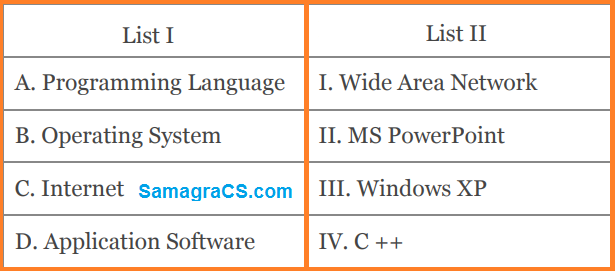 Choose the correct answer from the options given below: |
| i ➥ A-I, B-II, C-III, D-IV |
| ii ➥ A-IV, B-III, C-I, D-II |
| iii ➥ A-IV, B-II, C-III, D-I |
| iv ➥ A-II, B-III, C-I, D-IV |
| More Discussion | Explanation On YouTube | Learn Topic Wise | Help-Line |
| Q37➡ | Which of the following educational objectives are considered to be of higher level in the affective domain of taxonomic scheme? A. Synthesis B. Characterization C. Analysis D. Organization E. Precision Choose the correct answer from the options given below: |
| i ➥ A and B only |
| ii ➥ B and C only |
| iii ➥ B and D only |
| iv ➥ D and E only |
| More Discussion | Explanation On YouTube | Learn Topic Wise | Help-Line |
| Q38➡ | Given below are two statements Statement I: ALU stands for Arithmetic Logic Unit. Statement II: UPS stands for Uniform Power Source. In light of the above statements, choose the correct answer from the options given below. |
| i ➥ Both Statement I and Statement II are true |
| ii ➥ Both Statement I and Statement II are false |
| iii ➥ Statement I is correct but Statement II is false |
| iv ➥ Statement I is incorrect but Statement II is true |
| More Discussion | Explanation On YouTube | Learn Topic Wise | Help-Line |
| Q39➡ | Because of new media, learning is no longer an assembly of. |
| i ➥ Liberal views |
| ii ➥ Technology-based efforts |
| iii ➥ Facts |
| iv ➥ Knowledge |
| More Discussion | Explanation On YouTube | Learn Topic Wise | Help-Line |
| Q40➡ | For the following research problem, which of the listed research methods will be most appropriate? “School principals influence on trust: Perspectives of mothers children with disabilities” |
| i ➥ Experimental method |
| ii ➥ Focused group discussion (FGD) based method |
| iii ➥ Descriptive survey method |
| iv ➥ Ex post facto method |
| More Discussion | Explanation On YouTube | Learn Topic Wise | Help-Line |
| Q41➡ | Given below are two statements Statement I: In a classroom, every teacher has to perform the gatekeeping function Statement II: Every teacher in any higher educational institution should act as the moral custodian of students, both inside and outside it. In light of the above statements, choose the correct answer from the options given below. |
| i ➥ Both Statement I and Statement II are true |
| ii ➥ Both Statement I and Statement II are false |
| iii ➥ Statement I is correct but Statement II is false |
| iv ➥ Statement I is incorrect but Statement II is true |
| More Discussion | Explanation On YouTube | Learn Topic Wise | Help-Line |
| Q42➡ | In a coded language if ANIMAL is written as LAIMNA, then CIRCLE will be written as. |
| i ➥ ELRCIC |
| ii ➥ ELCRIC |
| iii ➥ ERLCIC |
| iv ➥ ERCLIC |
| More Discussion | Explanation On YouTube | Learn Topic Wise | Help-Line |
| Q43➡ | The action plan arising from the Academic and Administrative Reforms Committee appointed by the UGC with Prof A. Gnanam as its convener included which of the following? A. Choice-based credit system B. Vocationalization of higher education C. Curriculum development D. Deciding on the number of student-faculty contact hours during a semester E. Skill-based courses and programmes Choose the correct answer from the options given below: |
| i ➥ A, B and C only |
| ii ➥ A, C and D only |
| iii ➥ B, C and D only |
| iv ➥ C, D and E only |
| More Discussion | Explanation On YouTube | Learn Topic Wise | Help-Line |
| Q44➡ | Identify the correct sequence of Carbon (C) to Nitrogen (N) ratio in decreasing order in organic waste material A. Food waste B. Leaves and foliage C. Paper D. Cow manure Choose the correct answer from the options given below. |
| i ➥ C, B, D, A |
| ii ➥ C, A, D, B |
| iii ➥ B, C, D, A |
| iv ➥ B, D, C, A |
| More Discussion | Explanation On YouTube | Learn Topic Wise | Help-Line |
| Q45➡ | What are the most prominent elements in the management of communication in an educational institution? A. Sidetracking oppositional views. B. Structuring work roles. C. Commanding over colleagues and students. D. Keep others informed. E Guiding others wherever possible. Choose the correct answer from the options given below: |
| i ➥ A, Band C only |
| ii ➥ B, C and D only |
| iii ➥ C, D and E only |
| iv ➥ B, D and E only |
| More Discussion | Explanation On YouTube | Learn Topic Wise | Help-Line |
Q46➡ | 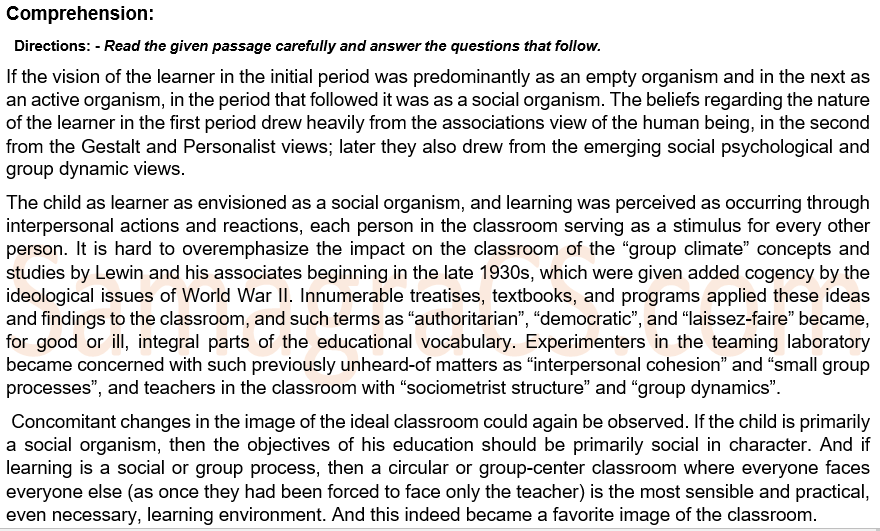 Ques- The author of the passage is in favour of the idea of. |
| i ➥ Vertical learning |
| ii ➥ Laboratory learning |
| iii ➥ Circular learning |
| iv ➥ Teacher-focussed learning |
Show Answer With Best Explanation
| More Discussion | Explanation On YouTube | Learn Topic Wise | Help-Line |
Q47➡ |  Ques- In the learning laboratory, the focus shifted to. |
| i ➥ Production of textbooks |
| ii ➥ Creation of educational vocabulary |
| iii ➥ Democratization of the process |
| iv ➥ Understanding group dynamics |
Show Answer With Best Explanation
| More Discussion | Explanation On YouTube | Learn Topic Wise | Help-Line |
Q48➡ |  Ques- In the social organistic view, learning occurred through. |
| i ➥ Each individual acting as a stimulus |
| ii ➥ Reactionary measures |
| iii ➥ A non-competitive environment |
| iv ➥ Each person holding fort for others |
Show Answer With Best Explanation
| More Discussion | Explanation On YouTube | Learn Topic Wise | Help-Line |
Q49➡ |  Quest- The first vision of the child as a learner was. |
| i ➥ Personalistic |
| ii ➥ Social |
| iii ➥ Humanistic |
| iv ➥ Associationistic |
Show Answer With Best Explanation
| More Discussion | Explanation On YouTube | Learn Topic Wise | Help-Line |
Q50➡ |  Ques- The group climate of the classroom got reinforced by |
| i ➥ Social issues |
| ii ➥ Ideological issues |
| iii ➥ Inter-personal issues |
| iv ➥ Individual issues |
Show Answer With Best Explanation
| More Discussion | Explanation On YouTube | Learn Topic Wise | Help-Line |

